|
Continuing the re-runs of our series of marketing blogs first published in February 2021  I’m starting this week’s blog with some basic maths for you. Let’s say you write at a rate of 1,000 words every two hours and you produce a book that is around 90,000 words long. That means that it took you about 180 hours to write. Those 180 hours may be spread over a few weeks, a few months or even a few years, but it doesn’t matter. If you were to pay yourself the UK national minimum wage (July 2022) for your work, you would get £9.50 per hour if you are over 22. So, multiply the number of working hours by the hourly rate and it means that you need to receive £1,710 in “royalties”, just to pay you for the time taken to write your book, which doesn’t include time spent editing, re-writing, proofreading, formatting, up-loading and marketing. But we’ll keep it simple and call it £1,700. If you sell your book as an ebook on Amazon for £4.99, which is a typical price for an Indie author, you will receive about £3 in royalties, which means you need to sell 566 books just to cover your wages for writing the book. "You need to sell 566 books just to cover your wages." But if you are signed to a publisher, you can expect to receive about 50% of your royalties, because the publisher takes the other 50% to cover the work they do (they don’t work for minimum wage). That means you need to sell 1,133 books to earn £1,700. That doesn’t sound too bad, does it? There are many self-published authors who sell a lot more books than that. Actually, that is quite a lot of books for an unknown author to sell. So, the unknown author has to find a way to become a “known” author and that is where marketing comes in. There are 4,000 new books published every day, that’s over 115,000 a month. Most of those books will be by unknown authors and most of those authors will remain unknown – unless they learn how to market their product. Trust me, 1,133 people aren’t going to stumble across your book by accident. 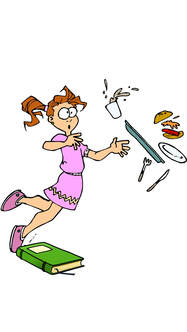 If you don’t believe me, just upload your book onto Amazon, don’t do anything else or tell anyone about the book and see how many copies you have sold after 6 months. I can tell you exactly how many it will be – 0. But if I’ve got a publisher, why do I need to do the marketing? A good question. All authors, even those signed to big publishing houses, have to do some marketing – remember it’s the authors that do the book tours and radio interviews, not the publishers, and those are marketing activities just as much as the sort of things I’m going to talk about. But the short answer is that your publisher has several authors on which to concentrate, but you can concentrate on you. Double the marketing activity means double the likelihood of selling some books. You have to work as a team on this to get the best results. But this blog is actually aimed at all Indie authors, so this is aimed at the self-publishing community just as much as at the published community. "So this is aimed at the self-publishing community" The problem is that marketing costs money. How much it costs will depend on a number of things. If you are good at it, it may cost you nothing because your costs will be more than covered by your income. If you aren’t any good at it, it could cost you quite a lot of money to get somebody else to do it for you. This is where “social media marketing” comes in, because that is the cheapest form of marketing there is, short of standing on street corners and shouting about your book. However, just putting something on Facebook or Tweeting about your book isn’t going to work. Why not? Let me use an analogy. 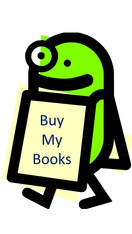 Let’s say you live in a house and on the wall outside your house you hang a loudspeaker. Inside you have a microphone connected to the speaker (for the nerds, yes it is connected through an amplifier). Then you close the curtains so you can’t see the street. Now you stand in your room, speaking into the microphone saying “buy my book” over and over again. Will this sell your book? First of all, you don’t know if there are any people outside your house to hear your announcement. At some times of the day the street might be quite busy, but at others it will be empty. Secondly, even if people are there, you don’t know if they read books and, thirdly, even if they read books, you don’t know what sort of books they read. If they don’t read books like yours then you are wasting your time. "Your announcements are getting lost amongst theirs." But it’s worse than that. Because there are 99 other houses in your street and in each one of them there lives another author and all 100 of you are doing exactly the same thing, so your announcements are getting lost amongst theirs and theirs are getting lost amongst yours. And that is why social media marketing fails for so many authors. Which means that just posting on Facebook, Instagram or Twitter is probably not going to sell you many books. Which brings me to paid services. 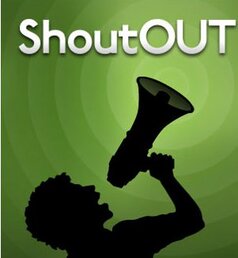 There are dozens, even hundreds, of online suppliers offering to Tweet your book to their gazillion followers – at a price. The problem is that they are doing exactly what I have described in my analogy. Which means you are paying them to do something that you already know doesn’t work. It doesn’t matter how many followers they have, or how many likes their FB and Insta accounts get, if they aren’t reaching the right people, they aren’t selling your book for you. Our recommendation is not to pay for services like that. "you are paying them to do something that you already know doesn’t work" But if social media marketing doesn’t work, why do so many businesses spend so much money on it? Because it does work, but not if you just stand in your house shouting “buy my book”. There is a science behind social media marketing and if you learn how to use that science, your book will sell.  If you have been following this series of blogs you will know that we are great advocates of “learning” and this is something else you can learn about. This course with Future Learn is free and serves as a good starting point. It is only two weeks of study (you could complete it in a day if you felt like it) and you can sign up from anywhere in the world. And it isn’t just for authors – any small business can use social media marketing. The best use of social media marketing isn’t actually to sell books – it’s to raise “brand awareness”. It’s about getting your name and the title of your book into people’s memories so that when they go looking for books to buy on actual book selling sites, they will recognise your name or your book’s title and think “I know his/her name” Or “I know that title”. They then think “Why do I know that name (or title)? I must have heard something about it. I wonder if it's any good”. And that is where your sales “closure” kicks in – the book’s blurb and it’s few pages on “Look Inside”. But if you’ve gone for obscure or weird usernames on Facebook, Twitter or Insta, then you may have shot yourself in the foot because the name under which your write may not be instantly recognisable – so think about that. In last week’s blog I listed the 6Ps of marketing and I said I’d return to them. So, I’m going to start with that first P – product and how it relates to social …. Tell you what, let’s call it SMM for short. What is your product? 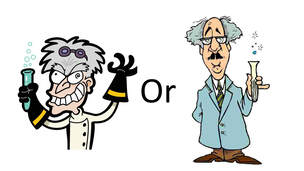 Yeeeees, it’s a book, we know that. But is it just a book? For example, is it fiction or non-fiction? There’s no point in trying to sell a fiction book to someone who only reads non-fiction. Next, what genre is it? Some people read only one genre, some read a few different genres and some people read anything and everything. The problem is, you have to assume that they only read one genre and that it is yours. "This is called audience targeting" So, what does your reader look like? If you write in the same genre as you read, then they may be people just like you. But if you write in several different genres, you may have several different types of reader and you need to address each one in a different way. You won’t attract a reader of Young Adult (YA) fiction in the same way as you attract a reader of military history – they are two very different people. This is called audience targeting. If you know what your audience looks like and behaves like, then you can target them better. You can be online, on Twitter for example, at the same time of day as them. You can shape your marketing messages in a way that appeals to them. Most importantly, you can engage with them. 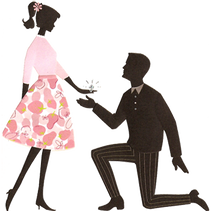 Because social media marketing isn’t about advertising, it is about engagement. If you can establish a relationship with your target audience – even if it is only via a social media platform, they are more likely to take an interest in you and more likely to take an interest in your work. I’ll give you a frinstance (as my Mum called it). If your ideal reader is likely to have an interest in brewing craft beer and you have an interest in brewing craft beer, you can engage with them by talking about craft beer brewing. The fact that you are also an author becomes incidental. One day they may decide to look at your profile on whatever social media platform you are using and then they will discover that you are an author, at which point they may take a look at your book(s). But you haven’t forced it on them. "and that’s the battle half won." But, importantly, if they’re browsing Amazon looking for new books they may come across your name and remember you as a nice person who likes craft beer brewing as much as them – and they’ll take a look at your books. Or, they may see one of your actual announcements about your book and say to themselves “Oh, I didn’t realise he/she was an author as well as being a craft beer brewing enthusiast. I wonder what his/her books are like?” and they might take the time to find out. Because you have done your research on your “ideal” audience, the chances are they will read the sort of books you write and that’s the battle half won. Does this sound like manipulation? We’d prefer to think of it as understanding human behaviour. In any business of any size, there are people earning salaries far bigger than mine who are “understanding human behaviour” and using it to sell you something. At least you do have a genuine interest in craft beer brewing (or whatever). BTW, engagement doesn't mean just asking questions, as many people do on Twitter or Facebook. Unless you get involved in a conversation about the answers, you aren't engaged, you are just annoying people by not engaging.  So, a bit of homework for you for next week. Draw a pen picture of your ideal reader. Here’s a few things for you to consider:
 Identifying your target audience is an important first step in your marketing strategy. Strategy: that’s a big scary word. Don’t let it scare you though because it is far easier to understand than you may think. It is the implementation of the strategy that is actually the hard part. But I’m getting ahead of myself. See you next week (I hope). If you have enjoyed this blog or found it informative (both, we hope) and you want to make sure you don't miss the next edition, just sign up for our newsletter. We'll even send you a free ebook for doing so. Just click the button below.
1 Comment
Continuing a re-run of our series of marketing blogs, just in case you missed them first time around. 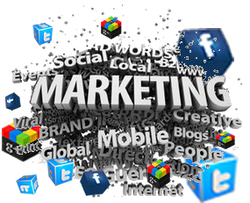 I’m going to be honest with you up front. To market your book properly you really need to do a business management course with a strong marketing focus, then work in a marketing department or consultancy for several years to gain experience. But you haven’t got time for that, so you read blogs about marketing instead. Fortunately, one of our team (me) has a Masters in Business Administration and knows a bit about marketing, so we can post this blog and not worry about being accused of not knowing what we’re talking about. But it is a complex subject and in a blog all we can really do is scratch the surface and provide you with a few pointers to get you heading in the right direction. 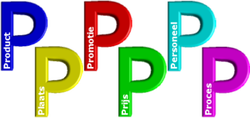 Our starting point is the “6Ps”, aka “The Marketing Mix”. These are the six areas on which a marketing strategy is based. Get them right and you have a fighting chance of selling your product – any product. Get them wrong and you are going to struggle to sell anything. Pretty much anything you have ever bought that isn’t an essential to your survival, you have bought as a consequence of responding to the marketing mix. Even the brand you have selected in preference to another brand is as a result of successful marketing. You are even reading this blog because of marketing. "You are even reading this blog because of marketing." Marketing is so ubiquitous that we hardly even notice it. Note that I haven’t used the word “advertising” so far. That is because advertising is just one small part of the marketing mix – though it is the bit that probably costs the most. But what are the 6 Ps? They are:
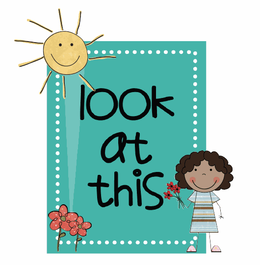 But before that we’re going to talk about book covers. Why? Because they are actually part of your marketing mix. They are a “promotion” tool. But they are so important that they need a whole blog of their own. They say “Never judge a book by its cover” (African Journal of American Speech, 1944 - the original version actually said “spine”, which is even more pertinent). But people judge books by their covers all the time. And they will judge your book by its cover too. "And they will judge your book by its cover too." Imagine you are in your favourite bookshop, looking for your next read. You browse along the line of shelves and all you can see is the books' spines. On the spine you will see two things: the author’s name and the book’s title. The rest of the spine is just coloured paper and maybe a few stray lines from the book’s cover that the designer wrapped around to make it look more interesting.  You will be drawn to the book either by the author’s name – it is familiar to you - or by the book’s title - it is intriguing and you want to know more. So, you pull the book off the shelf and you read the blurb, which is either on the rear cover or on an inside page where it’s easy to find. By the end of reading that you are halfway to buying the book. You may, by now, have noticed the front cover, but you may not have. But on a website, you aren’t just presented with the things you are in a bookshop. On a website you can see the entire front cover of the book. If it grabs your attention it may draw you in before you even know the author’s name or you read the book’s title. So, the cover of the book is now a vital ingredient of your marketing strategy. Whatever we are here at Selfihsgenie, we’re not experts on book cover design, but we know that if you put the right cover on the right book, it will sell. It needs to tell you something either about the plot or about the main character(s). Most of all it needs to tell you something that will make you want to read the blurb.  Look at the cover for Stalker, which is one of the books we publish. The cover is dominated by a shadowy, menacing figure. Straight away you know that this is a book about menace and threat, it is trying to unnerve you and make the hairs on your neck stand on end. It is probably more unnerving for a woman, which is unsurprising as it was written by a woman, but some men may also feel threatened by it. If you like books that do that, you may want to know more, in which case you will probably read the blurb and, if the website offers the facility, you may “look inside” and start reading the story. You are well on your way to buying that book. In fact, statistically, you are more likely to buy it than to not buy it. BTW, you can click on the image to find out more. There are a few ways to go about getting the right cover for your book. We’ll start with the cheapest. 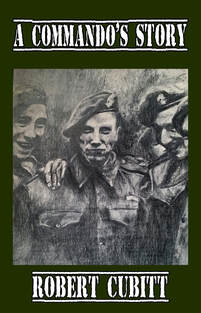 If you are an artist or designer, you can do it for yourself. One of our author’s was lucky; his sister* is an artist and because the book is a biography of their father, she was willing to design the cover for free. And it is a particularly good example of what we’re talking about. It’s the image shown alongside. I don’t know about you, but when I saw that face I wanted to know more about the man behind it. The eyes, in particular, have a quality that invites the question “What sort of man is he?” and to find out the answer, you have to read the book. Which is why we published the book. I’m not going to pretend it’s one of our best sellers, it’s in a very niche genre, but it has sold enough copies to justify its presence in our catalogue. Again, you can click on the image to find out more  The next cheapest option is to find a designer online who will design your book cover. There are plenty plying for hire on Fiverr.com and some of them are very good. Prices vary, you can get a simple design for about $20, but anything that requires more work is going to cost more. It is necessary to be very clear about what you want from your designer. They will do what they’re asked to do and they won’t read your book first to find out what it is about. This means that you need some sort of idea of what you want your cover to look like before you brief them. "The style must suit the genre of book. " The style must suit the genre of book. Moody sunlight over wildflower meadows, women in big bonnets and hunky men with their shirts open to the waist are fine for romances, but they aren’t going to sell you many sci-fi books or spy thrillers. So, make sure you understand what the norm is for your genre. It’s fine to be original and mould breaking, but only within the “rules” for your genre.  My recommended start point would be to go onto Amazon (or any other bookselling website) and browse through the books that are on offer, within your genre. Try to ignore the titles and author’s names. Just focus on the cover images. Which ones stand out for you and which ones don’t? The answer to that will inform what you ask your designer to do. If necessary, copy an image and send it to the designer and say “something like that!” Many designers work with Photoshop or similar software to merge and overlay images. That’s fine if they produce the result you want. But remember, you have to own the right to use the image(s).  If you didn’t take the photo(s) yourself, you don’t own the copyright and you can end up in trouble if you use the image without the copyright owner’s permission. And it doesn’t have to have the © symbol displayed for you to be liable. There are hundreds of thousands of images available on websites such as Depositphotos and Shutterstock (and similar sites) and their general licences allow you to use them for book covers (sometimes up to a maximum number of copies sold). Bite the bullet and buy from them. Yes, you can go onto a search site such as Bing Images and select the filter that says “Free to share and use commercially” – but that doesn’t mean they are. I have seen images that are the copyright of companies like Getty Images that are displayed under that filter and Getty Images are very litigious if you use one of their images without purchasing a license. Never assume – always check. As an aside, the same applies to ANY image you use in a book. If you didn’t take it or make it, you can’t use it without permission and you may (more than likely will) be sued for breach of copyright. Yes, we know that lots of people do it, but that doesn’t mean they won’t end up in court one day. Just remember the story of Wikipedia and the monkey that took a selfie. 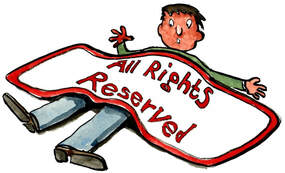 Many publishers offer a design service for book covers. Some ask for payment up front, but others don’t, and some state that if the author takes back the publishing rights for the book then they have to purchase the right to use the cover image. So do make sure you know who owns the copyright for the cover – it may not be you. You may have to have a new cover designed if you want to self-publish the book or sign with another publisher. FYI, we make it clear in our contract that if we design a cover, or pay for a cover to be designed, then we own the copyright for it and it has to be purchased if the author wants to use it elsewhere. To be honest, we’d rather the author came up with their own cover design, but we know that isn’t going to happen very often. Not every author has a sister who is a talented artist. For some more tips on book cover design, try this blog. So, you have an edited and proofed book, you have a cover and it is sitting on a retail platform just waiting to be discovered by eager readers. What happens next? Find out in next week’s blog. If you have enjoyed this blog and found it informative and don't want to miss the next edition, you can sign up to our newsletter by clicking the button below. We'll even send you a free ebook for doing it. * To find out more about the artist who designed the cover for "A Commando's Story", Di Cubitt, you can visit her website.
Over the next few weeks we will be revisiting the series of blogs we posted early in 2021, about marketing for Indie Authors and authors published by smaller publishers. This is partly for the benefit of people who didn't see them the first time around, partly to remind people about some of the tools and techniques we suggested and partly to update the content to reflect lessons learnt. Whatever reason you have for visiting and reading the series, we hope you find something of interest to you. More importantly, we hope you find something that will help you to boost your book sales. 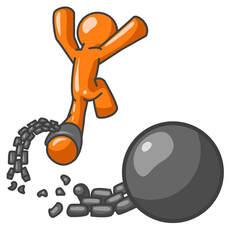 So, you’ve tried finding an agent and not been successful and you’ve submitted your book to medium sized publishers with similar results. Congratulations, you are now an “Indie author”. This is a club that is growing in size and probably has a global membership of over a million authors right now. You even have your own hashtag on Twitter: #indieauthor. With the arrival of the internet, whole new industries opened up that had never existed before. Amazon may be ubiquitous today, but it is sometimes easy to forget they didn’t even exist until 1994, just 27 years ago. "Congratulations, you are now an Indie Author." One of the things the internet brought was platforms that allowed authors to self-publish their books. Lulu was one of the first, established in 2002. It was a game changer for authors who couldn’t find a publisher. It also produced an exponential growth in the number of people describing themselves as authors, to the millions there are around the world today. Unfortunately, self-publishing is still sneered at by many and shunned by more than a few readers. The way some readers see it, a self-published book, for some reason, can’t possibly be good. This is no more true than saying that a bookshelf built in someone’s garden shed is going to collapse. Yes, it might, but at least try placing your book on it before you make that judgement. You are not Sheldon Cooper – you can embrace change. 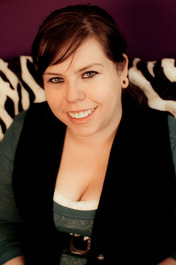 "Indie" author Amanda Hocking "Indie" author Amanda Hocking Have you heard of Amanda Hocking? No? Well maybe you should be more adventurous in your reading. In 2010 she was un unknown and penniless author from Austen, Minnesota, USA, frustrated at not being able to find a publisher. She wanted to raise $300 so she could go to Chicago to a Muppets exhibition (she was a big fan). So, she self-published her book. After just a few weeks she had sold 150,000 copies, making $20,000. Several books later and she is now a millionaire. Not a single publishing house nor a single agent was involved. She did it her way. In 2019, L J Ross knocked J K Rowling off the top of the best seller charts with her self-published book and there are many other success stories for Indie Authors. OK, not every author can be an Amanda Hocking or L J Ross - but you can all dream. There are plenty of authors who make a respectable living by self-publishing. There are also thousands who will never make a penny out of it, but there are reasons for that and we’ll take a look at some of those later in this series of blogs.  One thing some authors discovered was that if they could publish their own books, they could also publish books for other authors. This has led to the growth in small publishing houses and not all of them offer good value for money. I’ll get onto that in a moment as well. But, for the moment, I’ll tell you that I’m going to talk about self-publishing and using small publishers as though they are the same thing because, for most purposes, they are. So, if they are the same, why should you use a small publisher? Here we get to the crux of the matter. A publisher (please excuse me for dropping the “small” prefix) will do things for you that you don’t know how to do, you don’t want to do, you don’t have the time to do, or they can do it better than you. The last time we redecorated our house we could have done it ourselves and saved a lot of money. Why didn’t we? Because our local painter and decorator could do a better job, made a lot less mess and we could carry on doing the things we really wanted to do, which wasn’t painting and decorating. Small publishers are the painters and decorators of the self-publishing world. "So, if they are all the same, why should you use a small publisher?" At the very least, a publisher should be doing the following:
I’ll be talking more about each of these in a moment.  If the publisher has done those things, they have earned their share of your book’s royalties. If they didn’t, why are you using them? All of those things the author can do for themselves. They aren’t all easy and some of them are very time consuming and/or tedious. Which is why some authors may prefer to get someone else to do them. There are many “publishers” out there that will ask you for money up front to do those things for you. Don’t pay them. Why not? Because once they have your money, they have no need to do anything else; in particular, bullet number 6. Marketing the book is the hardest and most time-consuming part of the process, but it is the point at which the author earns their income. "Because once they have your money, they have no need to do anything else." Unfortunately, in marketing you often have to spend money to make money – which is why these “pay up front” publishers don’t want to do that, because it would cost them money. If you pay a “publisher” £500 to do the first 5 things on that list, then there is no need for them to do the 6th and hardest. They have fulfilled their remit by getting your book onto Amazon, Lulu or Kobo. They have no need to spend hours, days and weeks of additional effort – and cash - to market your book. But if the publisher has done those first five things without you paying them, they will want some sort of return on their investment of time and they will only get that when your book sells. Proper publishers are hungry and they need to eat, so they will work hard to market your book so they can earn money from it, alongside you. Pay up front if you want – but don’t expect your book to become a best-seller.  If you want to self-publish, then your starting point isn’t to upload your book onto KDP (or Lulu or Smashwords or Kobo etc). Your starting point is to learn how to do the 6 things in that list of bullet points above. In this blog we have previously talked about beta readers and they are your source of informed opinion on your book (informed because they are your audience). If you haven’t yet established your network of beta readers, then now is the time. Why is this a vital step? "Trying to market a bad book is like trying to market a bike with square wheels." 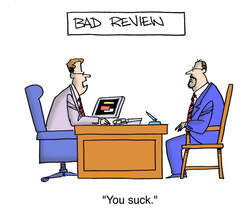 Well, people may buy your first book, but if it is the proverbial dog excrement, they will not come back for a second serving. Then there are the reviews. Not just on Amazon, but on Goodreads, Reddit and a whole host of other websites. Trying to market a bad book is like trying to market a bike with square wheels.. All authors get a few negative reviews, but if all you get are negative reviews you won’t sell any more books. And don’t try to fool people by getting friends and family to post good reviews for you. Amazon is wise to that and so are their customers. The reviews that carry the most weight are the ones posted by people who write a lot of reviews and that probably isn’t your Mum or your mate down the pub. But your beta readers have told you your book is great, so you don’t have to worry about future reviews too much. "The reviews that carry the most weight are the ones posted by people who write a lot of reviews." 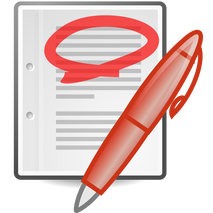 Editing is about taking a good book and making it better. It may be that a paragraph needs to be shorter, sharper, punchier. It may be that the descriptions are a bit flat and need jazzing up. The pace of the narrative may be too slow, or too frantic, or the plot is too confusing. It may be that the characters are too shallow or unbelievable. You may even be committing the cardinal sin of doing too much telling and not enough showing. An editor looks at all those things and more and offers advice on how to make them better. But they won’t re-write the book for you. There are plenty of people offering paid editing services online. It is up to you whether or not you engage with them. But if you do, make sure you understand exactly what to expect from them. You can expect to pay at least £20 an hour for editing, perhaps £200 for one read of your book – and that’s the cheap end of the scale. Second readings are usually cheaper, perhaps half the cost of the first. There are on-line courses you can do to learn how to edit your work and some of them can be accessed for free, or quite cheaply. Learn how to edit and you can enhance your book no end. You still need good characters and a good plot, but you already know how to create those, don’t you? If you don’t, then again, some investment in learning will pay dividends in the long term. But you already knew that. You may think you are a good writer already and maybe you are, but everyone can improve with a little bit of help. If you don’t think you have anything to learn, why are you reading this blog? I would recommend this course from Future Learn in conjunction with The Open University – and its free. You can also sign up no matter where you are in the world. "everyone can improve with a little bit of help." Proofreading is the checking of text for spelling mistakes, poor grammar and typos. Basically, checking your English. It is something that is much easier to do than editing, but it never hurts to get a fresh pair of eyes to take a look at your work. I have spotted typos and mistakes in books published by the biggest names in the business – so no one is immune from missing things, no matter how many times they read them. You can find proof-readers who are quite cheap, offering their services on Fiverr.com 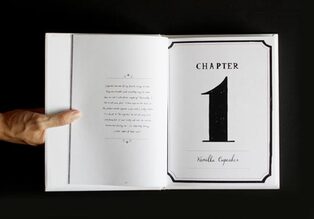 Formatting and uploading books is a matter of trial and error, but it is something that needs to be considered. I have bought books that have really not presented themselves very well because of poor formatting. A reader may have paid only 99p for your book, but they still want it to look like it cost £12.99. There is a whole blog that could be written about formatting and maybe we’ll write it one day, but the start point is to look at the books in your house and on your Kindle or other e-reader. What makes their layout pleasing – or what annoys you about them? If you do nothing else, take a look at what other publishers have done and copy it. 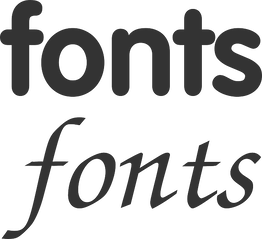 But fonts are especially important. There are fonts that are easy to read on the printed page; there are fonts that are easy to read on an e-reader; there are fonts that work on both and fonts that don’t work on either. Don’t spoil your book by using a font that looks pretty or quirky or different but doesn’t work on the media you have chosen for publishing. And do remember that a layout that works fine on an e-reader will probably need revising for a paperback. KDP can cause hours of frustration because of that. We recently published a book of poetry that we thought looked great using a particular font (it was a type of “cursive” script). It even looked good in the on-line previews. But when we published it, the very first buyer emailed to say his paperback copy was unreadable because of the script! We had to go back to the drawing board. Learn from our mistake. Uploading a book onto your chosen platform can take hours the first time you do it. But when you’ve finally beaten it into submission, the next time is a lot easier. There are help guides and often videos on most self-publishing platforms, but who wants to waste time reading/watching those? Actually, you do. Don’t work blind, use whatever help is available. One of our authors, Robert Cubitt, wrote a guide on how to use KDP, for some other author friends of his, and he has given us permission to let you use it. You can download it below. However, we accept no liability for it.  You will notice that I haven’t mentioned book covers and their design. That is a subject for a separate blog as it comes under the heading of “marketing”. Which brings us to that very subject. Have you got a few weeks to spare? No, didn’t think so. We’ll do our best to break this complex subject down into bite sized, easily digestible chunks. It is probably the most important part of this series of blogs, because this is where you will actually get the financial return for all those weeks, months or even years you have expended writing your book and getting it to the stage where you actually need to market it. "It's probably the most important part of this series of blogs" Over the next few weeks this blog is going to cover social media marketing mainly, which is the cheapest form of marketing you can do. We will also tell you why paying money to people to Tweet your books is money wasted. But that is part of the story, so we won’t spoil it for you. We’ll also take a look at the 6Ps of marketing and how they relate to social media. Feel free to Google that before we meet again. If you have enjoyed this blog, ot found it informative, why not make sure you don't miss any of the rest of the series by signing up for our newsletter. We'll even send you an ebook for doing so. Just click the button below.
Disclaimer: This blog talks a lot about Amazon, but we are not connected to them in any way other than they sell our books. We are definitely not being paid to mention their name and we are not recommending Amazon. We are just recounting our experiences in the hope of passing on some of the knowledge we have gained.  As an author who sells through Amazon, you will know all about “sales ranking”. If your book sells, the ranking improves and people are encouraged to buy your book because other people have bought it. And if your ranking is low, people think your book isn’t any good because other people aren’t buying it - but that is flawed logic. Just because a book isn’t selling it doesn’t mean it isn’t any good. It may just mean that nobody knows about it (we blogged about advertising last week, so we’re not going to go back over old ground). But you won’t convince some readers that a book is good if it isn’t selling and there’s not much we can do to change that mindset.  We have been fortunate over recent weeks that several of our books have sold well and their sales rankings have improved exponentially. Instead of being in the 7 digit ranking range they are into the lower end of the 5 digit range – and are still climbing. That’s for their overall, ranking of course, not the category ranking. In some obscure categories its possible to be the No 1 bestseller just by selling a single copy. So that isn’t a good comparison for the purposes of this blog. But we believe our books’ rankings should be higher still and we also believe that the way Amazon calculates their rankings doesn’t take into account a whole raft of “sales” through their own platform. I’m referring to Kindle Unlimited (KU) pages read. While they may not be direct sales, the way that a book is sold, the reader is still paying to read the book through their KU subscription and the author is still getting an income from those page reads. So, it is our contention that those page reads should be included in the calculations of sales rankings, which are an indication of the popularity of the book. KU page reads account for about two thirds of all our sales income (more for some individual titles). It is the equivalent of a lot of books sold. But Amazon doesn’t count them and there is no valid reason, as far as we can see, why they shouldn’t. In fact, it might actually be to Amazon’s benefit to include KU pages read, because the more popular a book, the more copies it sells and the more money Amazon will make from those sales. They are, effectively, depriving themselves of potential income with their current policy. I’ll use just one of our titles as an example of what we mean. "Our guestimate is that it would put the book into the top 1,000" But before we go on, a quick bit of jargon busting, for those of you who might need it. KENP means Kindle Edition Normalised Pages. It is the number of pages that Kindle Direct Publishing uses to calculate an author’s royalties for KU downloads. The more pages read in a book, the more the author gets paid. It is used to factor in the different font sizes and line spacings that authors use, which makes direct comparisons between the number of pages in a book problematic. We’re not sure how the KENP for a book is arrived at, but we suspect it may be based on character or word counts Mansplanation over, back to the blog.  Operation Absolom is the first book in Robert Cubitt’s “Carter’s Commandos” series. In July 2022 it sold 11 copies. This elevated it to around 30,000 in the Amazon rankings at the time. Although Operation Absolom is 296 pages long in paperback, its KENP is 437 pages. During July 2022, 19,215 KENP pages were read using KU. Divide 19,215 by 437 and it works out at 34 complete books. So, if 11 books sold gives Operation Absolom an average sales ranking of about 30,000, what would another 17 books give it if they were included in the figures? (BTW it actually peaked at around 10,000 - 7/7/22) Our guestimate is that it would easily put the book into the top 1,000, which makes the book look very popular indeed – as it is in reality. OK, we’re not talking J K Rowling or Lee Childs popular, but it is a lot more popular than a million other books on Amazon. "Perhaps weight of numbers might encourage a shift in policy" We could quote similar figures for the rest of the Carter’s Commandos series, because once people have read the first book it is clear they are then reading the rest of the series. But you get the idea from the one title we have used as an illustration. But it doesn’t look like that on Amazon. So, what can we do about it? We have already emailed Amazon to ask them why they won’t change the way they calculate their sales rankings. After all, they have all the data to hand and doing a new calculation that includes KENP would hardly be rocket science. This was their reply: “Sales rank is determined by a number of different inputs and may change over time. Amazon is constantly working to improve the quality of information available to our readers and authors. Please note that Sales Rank fluctuates every hour in line with customer demand and in relation to the demand for other books, both of which may vary based on factors such as popularity of new releases, seasonality, etc. Rankings reflect recent and historical activity, with recent activity weighted more heavily. Rankings are relative, so your sales rank can change even when your book's level of activity stays the same. For example, even if your book's level of activity stays the same, your rank may improve if other books see a decrease in activity, or your rank may drop if other books see an increase in activity. When we calculate Best Sellers Rank, we consider the entire history of a book's activity. Monitoring your book's Amazon sales rank may be helpful in gaining general insight into the effectiveness of your marketing campaigns and other initiatives to drive book activity, but it is not an accurate way to track your book's activity or compare its activity in relation to books in other categories. Thanks for taking time to share your thoughts about considering KENPC in sales ranking calculation. Customer feedback like yours is very important to helping us continue to improve our products and services. I appreciate your thoughts and will be sure to pass your suggestion along. Please refer to our Sales Ranking Help page for information regarding Sales Rank - https://kdp.amazon.com/help?topicId=A21KM4BNAD42EJ”  Amazon sales data - just the tip of the iceberg. Amazon sales data - just the tip of the iceberg. We emailed back to them, saying that they were undermining their own reply. If tracking the effectiveness of marketing is an important use of sale rankings, then Amazon should surely be doing its best to maximise its utility by including KENP data, because that fluctuates in response to marketing activity as well I also pointed out that by not including KENP, they were showing customers the tip of the iceberg, not the whole iceberg. They did reply once more, but only to provide platitudes. But if you are an author and your books are read using KU, then this is something that you should be concerned about as well. So why don’t you add your voice to ours and ask the same question? Perhaps weight of numbers might encourage a shift in policy Let’s face it, you have nothing to lose and your book’s sales ranking have everything to gain. But while we are on the subject of KU, would you like to help other Indie authors to maximise their income? I hope you said “yes” because it only takes a few seconds and will cost you nothing. When you get to the words “The End” in a book, there are often a few more pages left in it after that. They may be a preview of another book or an advert for other titles. It doesn’t matter. Just keep on swiping until you get to the actual end, so that the author gets paid for every last one of those KENPs. It may only be a few pennies (or cents) extra, but they add up. Even if the book wasn’t to your taste and you didn’t finish it, which is hardly the author’s fault, you can make sure they get full recompense for their work by swiping through to the end anyway. As I said, it costs you nothing but a few moments of your time. If you have enjoyed this blog or found it informative (both we hope), be sure not to miss future editions by signing up for our newsletter. We'll even send you a FREE ebook for doing so. Just click the button below. |
AuthorThis blog is compiled and curated by the Selfishgenie publishing team. Archives
June 2025
|
||||||

 RSS Feed
RSS Feed